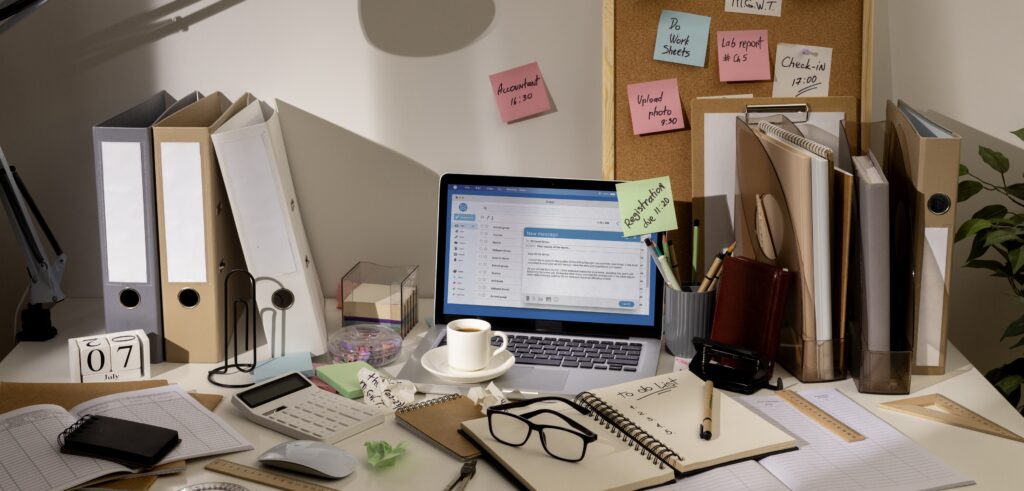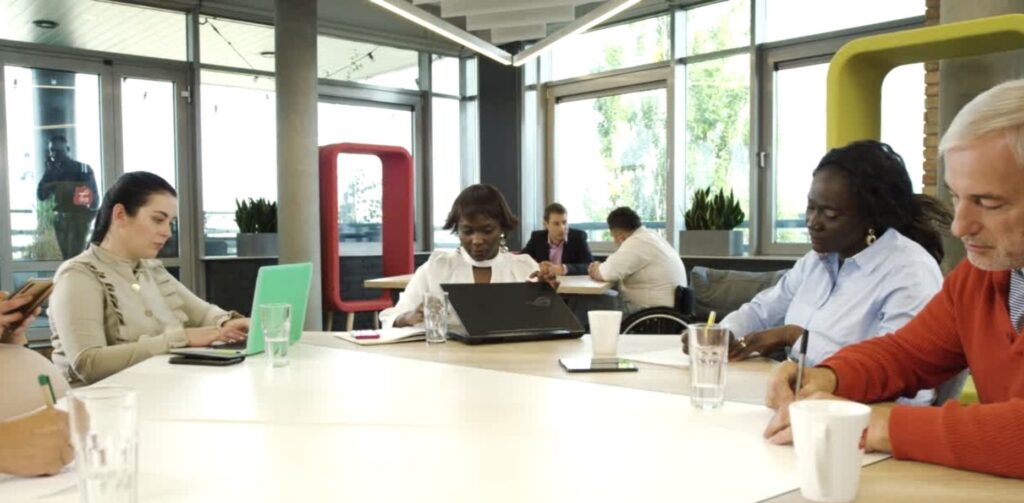Effective time management represents a challenge in any work environment, but when it comes to remote work, the absence of the typical parameters of a conventional work environment can intensify this difficulty.
Here are eight helpful suggestions for managing time while working from home to increase your focus, efficiency, and task orientation.
1. Organize your schedule: When working from home, it is crucial to collaborate with colleagues to establish a daily or weekly schedule, defining who will be in what place and at what time. Additionally, it is essential to agree on child-related responsibilities or household chores.
Recording these agreements helps keep planning in order, and can be done through shared calendar applications (such as Google Calendar, Trello or TimeTree) or even notes on paper on the refrigerator, with a magnet or on a whiteboard.
If the nature of your work and company allows it, explore the approach known as “journey with windows”. Unlike the conventional 9am-5pm schedule, windowed hours allow you to schedule blocks of time throughout the day to complete professional and personal activities, giving you the flexibility to work late if necessary to complete tasks.
2. Choose appropriate environments: Designate specific spaces in the home for different purposes and set expectations for each. For example, reserve the table set up in the bedroom exclusively for work, the living room just for leisure time and the kitchen table for meals and the children’s schoolwork.
These definitions assist in creating a connection between physical space and mental focus. Using the living room for leisure activities can make it difficult to transition into “work mode” while sitting with your laptop on the couch. Therefore, identify the best places in the house to work and play, maintaining this consistency.
3. Take advantage of productivity apps: Take advantage of the variety of software available to increase productivity (Evernote and Focus Booster are two free options found in the Brazilian Google Play and AppStore stores).
These tools not only help with project monitoring, meeting deadlines and organization, but also issue alerts for breaks or closing hours.
This is particularly valuable on days dedicated to intensive projects, where there is a risk of going over schedule. For break and stretch reminders, Stretchly (also available on major technology marketplaces) is an open-source app that offers on-screen alerts and a timer for physical movement.
4. Dress as if you were in the office: Adopt professional attire even in a remote environment. Choosing appropriate clothing helps you enter a state of concentration and productivity, establishing a clear distinction between time dedicated to work and personal time.
This practice sends signals to the brain, indicating the transition to a professional role, facilitating the change between these two worlds and improving time management and efficiency.
5. Treat free time like work commitments: Taking regular breaks, as would be common in an office environment, is essential. Schedule these breaks in your calendar, even if they are brief, to ensure not only a reminder, but also to reserve time on your calendar indicating unavailability. Use these breaks for a short walk, an informal conversation with co-workers, family members or even to interact with your pets.
6. Minimize distractions from social media: The vast amount of information available on the internet can result in distractions, such as FOMO (Fear of Missing Out) from major news and trends. Limit your use of social media during work hours, focusing on assigned tasks. Take short breaks throughout the day to relax, but remain disciplined to fulfill your responsibilities. If concentration is a challenge, consider using a browser in incognito (or private) mode to avoid automatic login to social media.
7. Transparency with leadership is crucial: Consider family responsibilities when establishing your work schedule, recognizing that traditional hours do not always align perfectly with your routine. Communicate openly with your manager to align expectations regarding availability and work schedules. Whether following a fixed schedule or taking the flexible “journey with windows” approach, finding what works best for you and your family is key.
8. Set personalized boundaries: When working remotely, your post-work “commute” can be a quick walk from your kitchen table to the couch. In these circumstances, effectively ending the workday can be challenging. Set an alarm to remind you to finish work, turn off your computer and place it in a distant location, avoiding the temptation to continue working.
Some people choose to turn off notifications from work-related apps on their mobile phones at the end of the day. As an additional tip, including your work hours in your email signature or as a status/away message, if possible, can help reduce the number of contacts outside of work hours.
What is Productivity Radar?
A management platform focused on efficiency and productivity. We transform management through data, tracking activities and processes, access, use and employee engagement, enabling more effective and assertive leadership.
Why do I need PR?
If you are looking for efficient ways to manage your human capital, to monitor processes, to evaluate the behavioral profile and want to have data-based management, this product was made for you and your business.
What are the focuses of management?
· Human Capital Management Platform
· Management of Teams or Workgroups
· Data-driven employee management
· Management of schedules and telephony
What do we make possible for your management?
Structure your Management 4.0: Have efficient management and integrate all business sectors into a single platform, visualize the processes and activities of your human capital.
Identify your GAP’s: Have visibility of the management and operation GAP’s, identifying repetitive processes, inefficiencies and malicious or bad faith behavior.
KPI’s Management: Create an efficient management of performance indicators, monitor in real time and improve the decision-making process.
Continuous improvement: Proactively analyze processes, people and activities in real time, create management focused on results and improve the corporate culture.
How to increase productivity?
Managing the activities of employees in a home office, hybrid or face-to-face. Accompanying individual and collective productivity. Mitigating employee idleness and providing cost reduction. Enhancing the prevention of fraud and bad faith. Conducting behavioral and predictive analysis of the employee.
Discover our product and request a demo
www.radardeprodutividade.com.br




